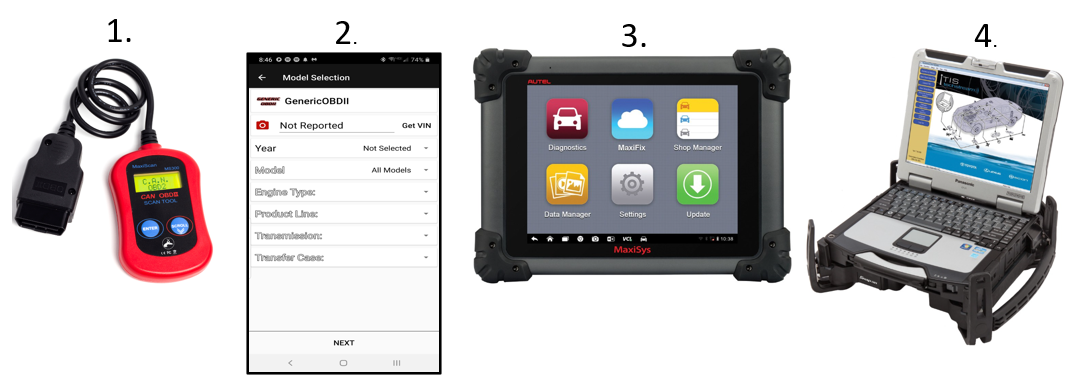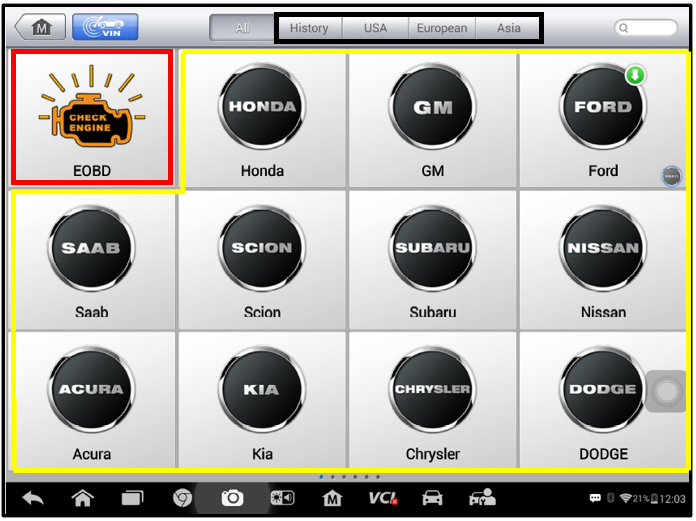Scan Tools
An automotive scan tool is an electronic device the technician uses to decode serial data, communicate with modules, diagnose problems, and sometimes reprogram vehicle control modules.
Remember that a scan tool is only as good as the user’s understanding of the data. When used with the proper reference materials, a scan tool can significantly help a knowledgeable, experienced technician performing computer-related diagnostics. Often, the device is more than a help; it's a necessity. But it cannot solve problems by itself. Understanding the data and accurately interpreting the information displayed is the key. The technician, not the tool, is the diagnostician.
Four Types of Scan Tools are available:
- Code Readers – They are inexpensive and quick but might not provide all the Global MODEs.
- Bluetooth for Smartphones – moderately priced but might not provide all the Global MODEs.
- Aftermarket will display Global OBD II and Enhanced (OEM Level in most cases).
- OEM factory specific, but may not include any, or all, of the Global OBD II MODEs.

A scan tool can be Wired or Wireless (Bluetooth), handheld or PC-based. To achieve a higher level of diagnostics, a Global Code Reader or Bluetooth for IOS and Smartphones will not do the job.
Two options are available when using an aftermarket scan tool, technician and there are advantages to both:
Global (EOBD) OBD II (Outlined in Red below):
- Might not identify the system by Make, Model, or Year (Note: some Global Scan Tools can identify the vehicle based on the VIN).
- Talks in standard Protocols to all systems. • Pre-CAN PIDS can be limited.
- PIDS can be extensive and provide some PIDS the Enhanced scan tools do not provide.
- Provide many PIDS similar to Enhanced OBD II but may identify them using different terminology.
- It provides no bi-directional testing and can only command the EVAP Vent Solenoid On, if available.
- It will communicate with emission-related modules like the Engine Control Module (ECM) and Transmission Control Module (TCM).
Enhanced (OEM) OBD II (Outlined in Yellow below):
- Does identify the system by VIN, Make, Model, and Year.
- Talks using the protocol specific to the individual manufacturer.
- It provides many PIDS similar to Global but may identify them using different terminology.
- It might provide PIDS not found in Global OBD II. PIDS might be divided into pages.
- Provides Bi-Directional Testing of specific Outputs.
- It may provide reprogramming options.
- Can communicate with most, if not all, modules on the vehicle.

Many times, with pre-Can OBD II, technicians would choose the enhanced side of the scan tool. This was because it offered more PIDs.
MORE CONTENT TO BE ADDED; PLEASE CHECK BACK!
